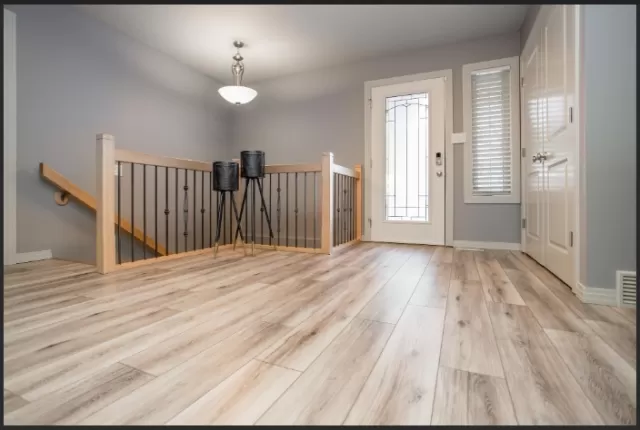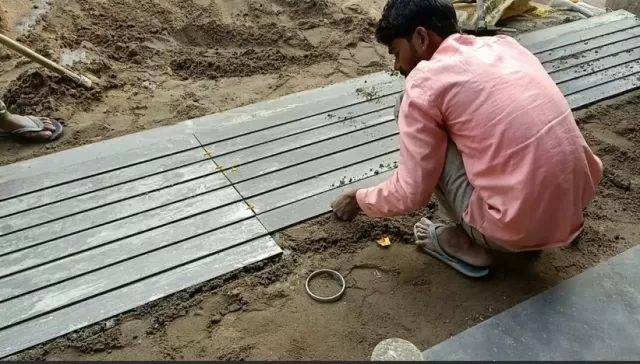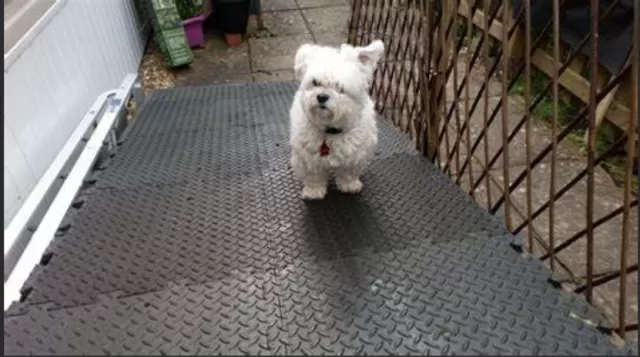Senior Dog Comfort: Vet-Approved Home Tips. Welcoming a dog into your home brings immense joy, and as your canine companion ages, it becomes essential to make adjustments that enhance their comfort and well-being. Carly Fox, DVM, senior veterinarian at Schwarzman Animal Medical Center, highlights common health concerns for aging dogs, including mobility issues, cognitive decline, vision impairment, and incontinence. Observing your aging pet at home can provide insights into areas where adjustments may be needed.
If you notice your senior dog struggling with tasks they once performed effortlessly, it’s time to consider making your home more accommodating. Here are some adjustments to enhance your senior dog’s comfort:
Ramps: Install ramps to assist with mobility, making it easier for your dog to navigate elevated surfaces.
Orthopedic Bed: Invest in an orthopedic bed to provide extra cushioning and support, particularly beneficial for dogs experiencing mobility issues.
Floor Coverings: Use area rugs or yoga mats to create non-slip pathways, addressing potential difficulties your dog may have with Slippery surfaces.
Furniture Placement: Ensure that furniture is arranged to facilitate easy movement for your senior dog, avoiding obstacles and creating a comfortable environment.
Regular Vet Check-ups: Schedule regular veterinary check-ups to address any health concerns promptly and tailor care to your dog’s specific needs.
By incorporating these adjustments, you not only promote a better quality of life for your senior dog but also contribute to their overall comfort and happiness. These considerations decrease the risk of injury, alleviate pain, and help ensure that your aging canine friend continues to enjoy a fulfilling and comfortable life in your home.
Ensuring Pet Safety on Hardwood Floors

For pets struggling with navigating slippery surfaces like hardwood floors, taking measures to protect them from potential strain or injury is vital.
Dr. Gary Richter, an authority in pet care, underscores the challenge faced by dogs on such surfaces, noting their tendency to slip.
A practical solution recommended by Dr.
Richter involves using area rugs or yoga mats to create a more secure environment for pets. Opting for these materials helps enhance traction and provides better stability for pets moving around the house.
Dr.
Richter suggests considering yoga mats in particular, available in large rolls that can be easily cut to size. By strategically placing these mats to form pathways, pet owners can create designated areas where their furry friends can walk comfortably without the risk of slipping.
By implementing these simple yet effective measures, pet owners can significantly reduce the potential for slips and falls on hardwood floors, ensuring the safety and well-being of their pets as they move around the house.
Enhance Comfort and Support: Consider an Orthopedic Bed for Your Dog
If your dog is finding it challenging to jump onto your bed or the couch, providing them with an orthopedic bed can be a thoughtful and beneficial alternative.
Dr. Fox emphasizes the advantages of these specialized beds, which offer additional cushioning and easier entry for your furry friend.
Orthopedic beds are designed to provide enhanced comfort and support, making them particularly beneficial for aging dogs or those with mobility issues.
Dr. Fox highlights the importance of the cushioning in preventing the formation of pressure sores, a common concern in older dogs due to decreased mobility and muscle mass.
By investing in an orthopedic bed, pet owners can contribute to their dog’s overall well-being, ensuring they have a comfortable and supportive space to rest.
This simple yet impactful measure can make a significant difference in the quality of life for dogs experiencing mobility challenges or the natural effects of aging.
Improve Accessibility for Aging Pets: Consider Installing Ramps

For aging pets facing difficulty with stairs, installing ramps can significantly enhance their ability to navigate and move around the home.
Dr. Whitney Miller, a prominent veterinarian, recommends this practical solution to make getting up and down stairs more manageable for elderly or mobility-challenged pets.
For homes with short staircases, Dr.
Miller suggests using a small non-slip ramp over the stairs. This simple addition can empower pets to navigate the stairs independently, promoting both their mobility and confidence.
However, it’s important to consider the size and practicality of the ramp, particularly for very large staircases.
In cases where large staircases pose challenges, Dr.
Miller advises that it may be safer for pets to avoid these areas altogether. For smaller pets, carrying them up or down the stairs may be a suitable alternative.
Ultimately, the goal is to create a living environment that accommodates the needs and comfort of aging pets, ensuring their golden years are spent with ease and accessibility within the home.
Promote Comfortable Dining for Older Dogs: Consider Elevated Dog Bowls
For older dogs experiencing difficulty lowering their necks to eat or drink water, elevated dog bowls can be a practical solution to reduce strain and discomfort.
Dr. Fox highlights the importance of addressing this specific need for aging pets to ensure a more comfortable dining experience.
Alternatively, pet owners can prop up their dog’s existing food and water dishes to achieve a similar effect.
However, Dr. Fox advises being cautious about the elevation height to prevent any potential discomfort.
To determine the appropriate height for elevated dog bowls, Dr.
Fox provides guidance. For larger dogs, the maximum height should be 6 inches below their chest, while for smaller dogs, it should be 3 inches below their chest.
Striking the right balance in elevation ensures that older dogs can comfortably access their food and water, promoting a positive and stress-free dining experience in their golden years.
Create Safe Zones: Install Gates to Protect Senior Pets

To ensure the safety of senior pets, especially in areas of potential danger, installing gates can be an effective and practical measure.
Dr. Fox emphasizes the usefulness of baby gates in creating designated safe zones within your property.
For instance, if you have stairs that pose a risk to your senior dog, strategically placing a baby gate can prevent them from attempting to navigate the stairs independently.
Additionally, gates can be employed to block access to certain rooms in the house when direct supervision is not possible.
For Outdoor Spaces, such as properties with pools, Dr.
Fox underscores the importance of gating the pool or preventing unsupervised access to the outside to prevent drowning incidents.
By strategically installing gates in danger zones, pet owners can create a secure environment for their senior pets, allowing them to navigate their living spaces with reduced risks and ensuring their well-being during their golden years.
*The information is for reference only.